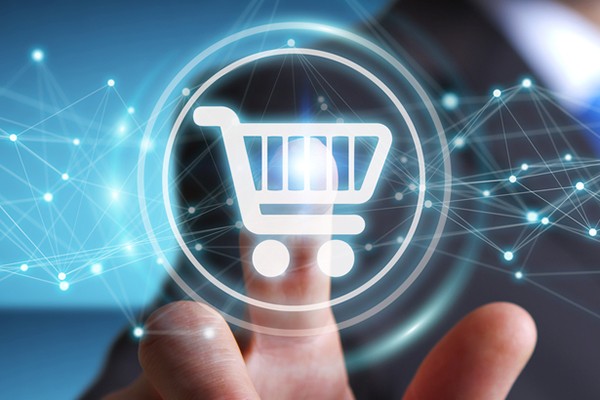Eco-commerce—a blend of sustainability and digital retail—has emerged as a significant force in the global market. As environmental concerns grow, consumers are seeking businesses that prioritize eco-friendly practices. By 2025, this shift is reshaping how brands operate, from sourcing materials to delivering products. This article explores key eco-commerce trends driving consumer behavior in 2025 and provides insights into how businesses can align with these expectations.
Key Drivers Behind Eco-Commerce Trends
Environmental Awareness
Consumers in 2025 are more informed about climate change and environmental issues than ever before. With access to documentaries, social media movements, and scientific studies, they recognize the impact of their shopping habits. This awareness drives demand for products that reduce waste, conserve resources, and promote sustainability.
Regulatory Changes and Incentives
Governments worldwide are implementing stricter regulations and incentives to encourage sustainable business practices. Carbon taxes, bans on single-use plastics, and subsidies for renewable energy adoption push businesses to innovate. Consumers, in turn, gravitate toward brands that comply with these standards.
Technological Advancements
Innovation plays a pivotal role in eco-commerce. Technologies like blockchain ensure supply chain transparency, while AI optimizes inventory to reduce waste. Renewable energy solutions and biodegradable materials make it easier for businesses to adopt sustainable practices without compromising efficiency.
Consumer Preferences in 2025
Sustainable and Ethical Products
Consumers prioritize products made with eco-friendly materials and ethical labor practices. Items crafted from organic, biodegradable, or recycled materials dominate their shopping carts. Ethical sourcing, such as fair trade certification, also influences purchasing decisions.
Transparency and Traceability
Shoppers expect brands to disclose sourcing and production details. They want assurance that their purchases align with their values. Blockchain technology and certifications like Fair Trade or Rainforest Alliance help businesses meet this demand.
Circular Economy Products
The circular economy—designing products for reuse, recycling, or refurbishment—gains traction. Subscription models offering shared or rental goods appeal to consumers looking to minimize waste. Brands adopting repair and take-back programs also see increased loyalty.
Local and Small-Scale Production
Support for local businesses grows as consumers prioritize reducing carbon footprints. Locally produced goods, often perceived as higher quality and more sustainable, gain popularity. This trend also helps revive traditional craftsmanship and small-scale production.
Emerging Eco-Commerce Trends in 2025

Personalized Sustainable Experiences
Consumers value personalized shopping experiences tailored to their eco-conscious behaviors. AI-driven platforms recommend sustainable products based on browsing history and preferences, enhancing satisfaction while supporting sustainability.
Eco-Friendly Packaging Innovations
Businesses are adopting biodegradable, compostable, and reusable packaging solutions. Zero-waste packaging options, such as edible wrappers or minimalistic designs, appeal to environmentally conscious consumers. Reducing packaging altogether—“eco-minimalism”—is another growing trend.
Carbon-Neutral and Net-Zero Commitments
Brands pledge to achieve carbon neutrality by offsetting emissions through renewable energy investments, reforestation projects, and efficient logistics. Certifications from organizations like Carbon Trust enhance credibility and consumer trust.
Green Logistics and Delivery Options
Consumers prefer slower, eco-friendly shipping options over rapid delivery. Companies invest in electric delivery vehicles, drones, and optimized routes to reduce emissions. Partnerships with carbon-neutral shipping providers also gain traction.
Digital Certifications and Eco-Labels
Eco-labels and digital certifications are essential for building trust. Certifications like USDA Organic, FSC, and CarbonNeutral provide consumers with clarity and confidence in their purchases.
The Role of Technology in Eco-Commerce
Blockchain for Supply Chain Transparency
Blockchain technology enables end-to-end transparency, allowing consumers to trace products from origin to final delivery. This innovation ensures authenticity and aligns with consumer demands for ethical practices.
AI and Big Data
AI-driven analytics predict eco-commerce trends, optimize inventory, and personalize shopping experiences. Big data helps businesses identify areas to reduce waste, improve logistics, and enhance sustainability.
Virtual and Augmented Reality (VR/AR)
VR and AR technologies enhance online shopping experiences while reducing waste. Virtual try-ons reduce returns, and AR visualizations help consumers understand a product’s environmental impact.
Green Payment Solutions
Green payment platforms, integrated with carbon offset calculators, enable consumers to neutralize their purchases’ environmental impact at checkout. These innovations simplify sustainable shopping.
Challenges Facing Eco-Commerce in 2025
Cost Barriers
Sustainable materials and processes often come at higher costs. Businesses must find ways to balance affordability and sustainability, such as scaling operations or innovating production methods.
Greenwashing Concerns
Greenwashing—misleading claims about sustainability—damages consumer trust. Businesses must prioritize authenticity, backing eco-friendly claims with certifications and measurable data.
Scaling Sustainability
As demand for eco-friendly products rises, brands face challenges in scaling without compromising values. Solutions include investing in efficient technology and collaborating with sustainable partners.
Consumer Fatigue
With numerous eco-labels and certifications, consumers may feel overwhelmed. Simplifying communication and focusing on key sustainability metrics can mitigate fatigue.
How Brands Can Align with Consumer Expectations
Emphasizing Storytelling
Authentic storytelling builds connections. Share your brand’s sustainability journey, highlighting milestones, challenges, and future goals to engage consumers emotionally.
Investing in Education
Educate consumers about your eco-friendly practices and the impact of their purchases. Blogs, videos, and infographics are effective tools for spreading awareness.
Collaborations and Partnerships
Partner with environmental organizations and green technology companies to amplify your efforts. Joint initiatives strengthen credibility and broaden reach.
Rewarding Sustainable Choices
Incentivize consumers to make eco-friendly choices with loyalty programs, discounts on sustainable products, or rewards for choosing green delivery options.
Future Outlook: Eco-Commerce Beyond 2025
Predictions for Long-Term Trends
Eco-commerce will continue to evolve, focusing on minimalism, sustainability, and regenerative practices. Innovations in renewable energy and green technology will reshape the industry.
Role of Global Collaboration
International agreements on sustainability standards will drive systemic change. Collaborative efforts between governments, corporations, and consumers will amplify impact.
The Rise of Regenerative Commerce
Moving beyond sustainability, regenerative commerce emphasizes practices that actively restore ecosystems. Initiatives like reforestation and regenerative agriculture are set to redefine eco-commerce.
Conclusion
In 2025, eco-commerce reflects a growing consumer desire for sustainable and ethical practices. From transparency and circular economy products to personalized shopping experiences, consumers prioritize brands that align with their values. By embracing these trends and leveraging technology, businesses can meet these expectations while driving positive environmental impact. The future of eco-commerce is bright, and now is the time to lead the charge toward a sustainable tomorrow.

